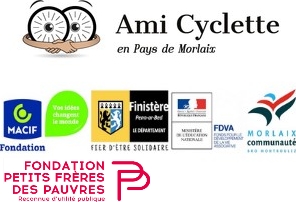Lorem Ipsum is filler text that is commonly used by designers before the content for a new site is ready.
Lorem ipsum dolor sit amet, consectetur adipiscing elit. Sed faucibus purus vitae diam posuere nec eleifend elit dictum. Aenean sit amet erat purus, id fermentum lorem. Integer elementum tristique lectus, non posuere quam pretium sed. Quisque scelerisque erat at urna condimentum euismod. Fusce vestibulum facilisis est, a accumsan massa aliquam in. In auctor interdum mauris a luctus. Morbi euismod tempor dapibus. Duis dapibus posuere quam. Pellentesque habitant morbi tristique senectus et netus et malesuada fames ac turpis egestas. In eu est nec erat sollicitudin hendrerit. Pellentesque sed turpis nunc, sit amet laoreet velit. Praesent vulputate semper nulla nec varius. Aenean aliquam, justo at blandit sodales, mauris leo viverra orci, sed sodales mauris orci vitae magna.
This module allows the displaying of a syndicated feed. Help
These plugins are behind the buttons found beneath your editor. They only run when an editor plugin runs.
Default on:
- Editor Button: Image
- Editor Button: Readmore
- Editor Button: Page Break
- Editor Button: Article
Default off:
- None
Editors are used thoughout Joomla! where content is created. TinyMCE is the default choice in most locations although CodeMirror is used in the template manager. No Editor provides a text box for html content.
Default on:
- CodeMirror Help
- TinyMCE Help
- No Editor Help
Default off:
- None
Here's how to find our shop.
By car
Drive along Main Street to the intersection with First Avenue. Â Look for our sign.
By foot
From the center of town, walk north on Main Street until you see our sign.
By bus
Take the #73 Bus to the last stop. We are on the north east corner.
This Module allows you to create your own HTML Module using a WYSIWYG editor. Help
This module shows the Joomla! copyright information. Help
Sous-catégories
Joomla!
Extensions
The Joomla! content management system lets you create webpages of various types using extensions. There are 5 basic types of extensions: components, modules, templates, languages, and plugins. Your website includes the extensions you need to create a basic website in English, but thousands of additional extensions of all types are available. The Joomla! Extensions Directory is the largest directory of Joomla! extensions.
Components
![]() Components are larger extensions that produce the major content for your site. Each component has one or more "views" that control how content is displayed.In the Joomla! administrator there are additional extensions suce as Menus, Redirection, and the extension managers.
Components are larger extensions that produce the major content for your site. Each component has one or more "views" that control how content is displayed.In the Joomla! administrator there are additional extensions suce as Menus, Redirection, and the extension managers.
Modules
![]() Modules are small blocks of content that can be displayed in positions on a web page. The menus on this site are displayed in modules. The core of Joomla! includes 17 separate modules ranging from login to search to random images. Each module has a name that starts mod_ but when it displays it has a title. In the descriptions in this section, the titles are the same as the names.
Modules are small blocks of content that can be displayed in positions on a web page. The menus on this site are displayed in modules. The core of Joomla! includes 17 separate modules ranging from login to search to random images. Each module has a name that starts mod_ but when it displays it has a title. In the descriptions in this section, the titles are the same as the names.
Content Modules
Content modules display article and other information from the content component.
User Modules
User modules interact with the user system, allowing users to login, showing who is logged in, and showing the most recently registered users.
Display Modules
These modules display information from components other than content and user. These include weblinks, news feeds and the media manager.
Utility Modules
Utility modules provide useful functionality such as search, syndication, and statistics.
Navigation Modules
Navigation modules help your visitors move through your site and find what they need.
Menus provide your site with structure and help your visitors navigate your site. Â Although they are all based on the same menu module, the variety of ways menus are used in the sample data show how flexible this module is.
A menu can range from extremely simple (for example the top menu or the menu for the Australian Parks sample site) to extremely complex (for example the About Joomla! menu with its many levels). They can also be used for other types of presentation such as the site map linked from the "This Site" menu.
Breadcrumbs provide users with information about where they are in a site.
Park Site
Park Blog
Here is where I will blog all about the parks of Australia.
You can make a blog on your website by creating a category to write you blog posts in (this one is called Park Blog). Each blog post will be an article in that category. If you make a category blog menu link with 1 column it will look like this page, if you display the category description (this part) displayed.
To enhance your blog you may want to add  extensions for comments, interacting with social network sites, tagging, and keeping in contact with your readers.   You will also enable the syndication that is included in Joomla! (in the Integration Options set Show Feed Link to Show an make sure to display the syndication module on the page).
Photo Gallery

These are my photos from parks I have visited (I didn't take them, they are all from Wikimedia Commons).
This shows you how to make a simple image gallery using articles in com_content.
In each article put a thumbnail image before a "readmore" and the full size image after it. Set the article to Show Intro Text: Hide.
Fruit Shop Site
Growers
We search the whole countryside for the best fruit growers.
You can let each supplier have a page that he or she can edit. To see this in action you will need to create a users who is in the suppliers group. Â
Create one page in the growers category for that user and make that supplier the author of the page. Â That user will be able to edit his or her page.
This illustrates the use of the Edit Own permission.









